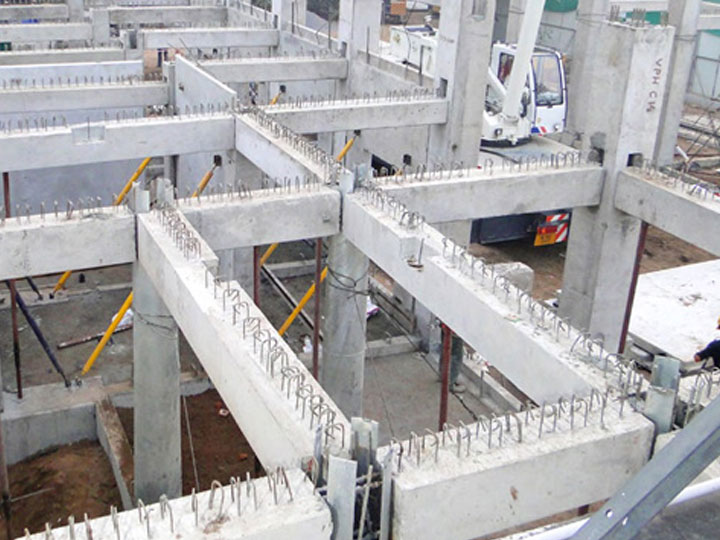Precast Concrete Explained: What is it and why should we use it
In the traditional method, we prepare the concrete structures on site, pouring fresh concrete in the place where the structure will be. But the prefabricated construction system works in terms of manufacturing the building components somewhere else and bringing them to site and assembling them. Today, we will try to explain Precast Concrete.
What is Precast Concrete
When individual concrete members that are supposed to fit a given whole structure are manufactured in one place and assembled in another, they are called Precast Concrete members. They can be of various shapes and sizes, targeted for various purposes.
Precast concrete members like beams, columns, slabs, etc. are manufactured in some sort of production area or factory, either in a designated manufacturing firm, or near the building site where accessible. Then they are moved to the actual location where the member will fit, using transports and heavy lifting machinery. When in position perfectly, they are assembled to the existing structure. Unlike the traditional cast-in-situ concrete, these members are not poured on site.
A great example of a building using precast concrete and prefabrication method is the t30 hotel in Lin Gang, China. Believe it or not, this 30-floor luxury hotel was built in just 360 hours! All thanks to prefabrication technology, it is also one of the most environmentally good and sustainable buildings in the world.
Pros of Precast Concrete
The concrete members created in the prefabrication system of construction, that is, the precast concrete, have some distinct advantages over traditional cast-in-situ concrete. We will line them up below.
- The same formwork or shuttering can be recycled for the same type and specification of precast concrete members.
- At a factory or production facility for precasting, much more vigilance can be kept over quality control, thus producing structural members of much better quality.
- A production yard can incorporate processes to smoothen the outer surface of the precast members, negating the need for plastering over it.
- A precasting factory or production yard is generally protected from weather and other elements that may disturb the work, so, production of precast concrete may go on any time all year round.
- It is much harder on site to give shape to concrete and keep it in shape. A concreting yard will have facilities available to do this easier and faster.
- Standardized procedures at the precasting factory directly translates to much faster work with better quality output.
- Precast concrete members are assembled, not cast, so they can be dismantled and recycled.
- Concrete curing is done much better at production yards.
- The assembling process is easier than casting.
- As a result of all these above reasons, a building constructed with precast concrete elements will rise much faster.
Cons of Precast Concrete
While there are tons of advantages (no pun intended) with precast concrete, there are some scenarios where cast in situ concrete would be much better. They are:
- Special kinds of transportation, handling, and support machinery are needed to build precast concrete structures. This is especially true when you are using particularly large or heavy members. That adds to the bill and the machines are subject to availability.
- The heavily mechanized construction method requires highly skilled workers. Where such are not available, it is recommended that you go the traditional way.
- Precast concrete members are vulnerable while being transported or lifted in place. Therefore if the ground situation is hazardous, it is better to stick to cast in situ concrete.
- If the building is simple and doesn't vary much from portion to portion, it is easy to use precast members. But if the design is highly variable and requires a lot of different types of members, the difficulty of using precast concrete increases alarmingly.
Standardized dimensions of precast concrete elements
Let us say M denotes the dimension of the basic module. Then,
- Floor or roof slabs: 3M x 1M x (multiple of M/4)
- Beams: 3M x (multiple of M/4) x (multiple of M/4)
- Columns:
- For heights up to 2.8 M: (multiple of 1M) x (multiple of M/4) x (multiple of M/4)
- For heights equal to or above 2.8 M: (multiple of 2M) x (multiple of M/4) x (multiple of M/4)
- Staircase: width of 1M, and the rest of the dimensions will depend upon the scenario
- Lintels: 1M x (multiple of M/4) x (multiple of M/4)
- Sunshades: 1M, nominal
